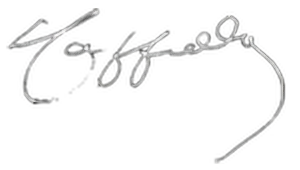Décoration
Cappiello could not be a street decorator thanks to his posters without also being an interior decorator.
IHe decorated numerous rooms in apartments and mansions in the Paris region with tapestries and decorative panels on the walls and ceilings. His attention to detail sometimes led him to design the furniture himself. All of these creations reflect Cappiello’s extraordinary and magical world. It is a world in motion, whose colors, although softer than those of his posters, remain just as cheerful.
He began his career as an interior designer in 1907 with a dining room at L. Louis-Dreyfus in Saint-Germain-en-Laye. These were compositions inspired by 18th-century art.
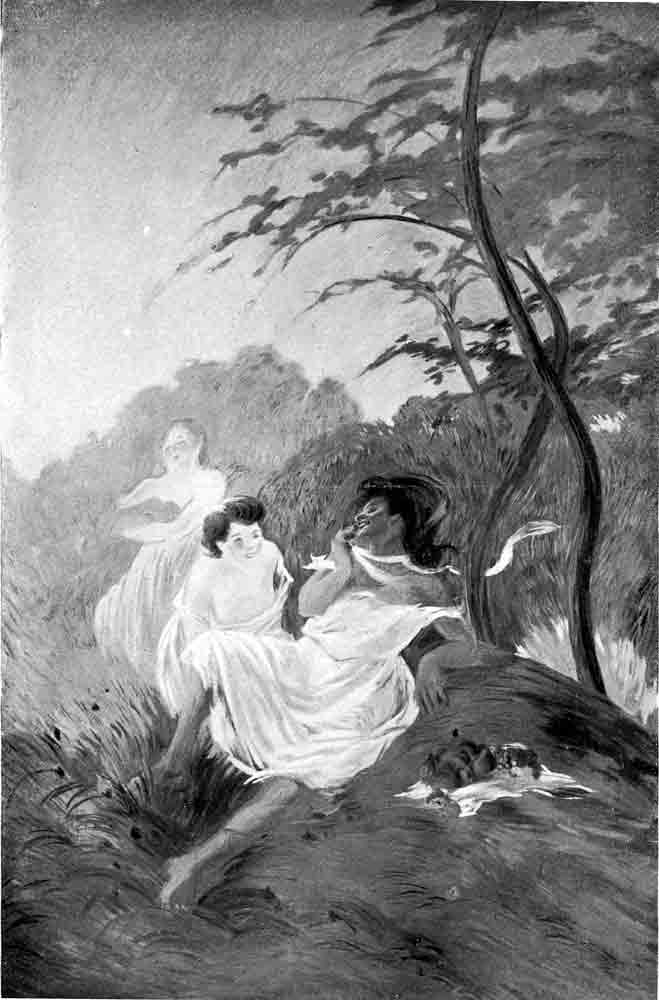

Decorative panels in the dining room of a private mansion
Decoration at Galeries Lafayette in Paris
In 1912, he designed a tea room, reading room, and smoking room for Galeries Lafayette. He defined the entire layout: paint, furniture, stained glass windows, lighting, carpets, waitresses’ uniforms, and he drew large panels depicting the four seasons and the four periods of the day. Louis Vauxcelles wrote in Gil Blas on October 5, 1912:
“The tea room is cheerful, bright, and luminous. Glass roofs where, among pink clouds, vines run, where fruits, wisteria, and oranges intertwine and interlace in pretty ornamental patterns; brightly colored pedestal tables and chairs, rugs, lighting fixtures, and furniture—everything is arranged to delight our senses; there is a lovely little bandstand where musicians play languid or frenzied waltzes. Cappiello has thought of everything, right down to the tea girls’ costumes (gray sheath dresses with black trim, crowns made of starched lace).
*** Translated with www.DeepL.com/Translator (free version) ***
Then there’s the Reading Hall, a feast of daring and unprecedented harmonies, though restful and cuddly, tender-blue, gold and mauve; on the wall, panels by a virtuoso of tone and form, spiritual nymphs, vaporously draped; armchairs dressed in baited mauve satin, a ravishing carpet, bold chandeliers where electricity fuses in the dazzle of crystal… An impression of discreet richness, perfect taste, precious teaching that will guide visitors without rushing them.
Finally, the more austere Fumoir, with its deep, warm dark purple note of comfortable armchairs and the marvel of its stained-glass window, where purple, lemon and indigo macaws cry out in color, is worth a visit on the third floor of the “Galeries” alone. It’s a masterpiece.
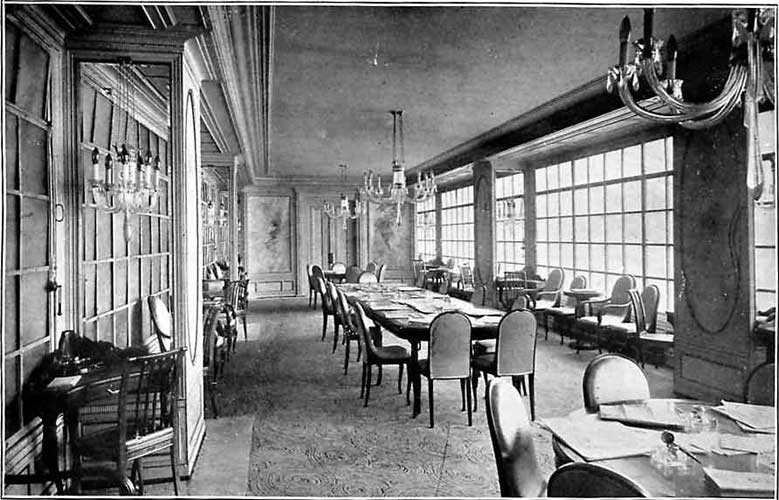
Decorating a grocery store
After the First World War, he resumed decorating apartments and private mansions. In 1920, he designed a ceiling for Baron Robert de Rothschild.
The same year, a grocery store opened at 20 rue Jean Goujon in Paris, entirely decorated by Cappiello. As a result, Parisians flocked to the store to buy. Jean-Louis Vaudoyer, in Les Echos de Paris of August 13, 1920, wrote:
Cappiello” is content to provide a background for the tins, tea packets and liters of “white” and “red”, and he has covered the shelves, counter and cash register with a beautiful, frank crimson coat of oil color. On this warm, frank background, the labels of the lobster and pea tins, the silver and blue-indigo papers of the bags and packages stand out like enamels; the wines and liquors shine like precious stones; – and, above, runs a wide frieze, where, on a background of the same scarlet hue, Cappiello has thrown a garland of characters and attributes, laughing, dancing, flying, all resplendent in the brightest and gayest colors.
Here are the spice fairies, the queen of chillies, the princess of cloves, the bitter and petulant sovereign of pickles. Here are the pink and appetizing muses of sweets, surrounding a marzipan horse like a little Pegasus. Here’s the fat Chinaman dropping a squadron of tea tins from his green dress; here’s Diana’s companion, with the pheasant and the hare, and other, more urbane nymphs, with sprays and powder puffs; here’s the bacchantes carrying grapes to the press, and young gardening beauties gathering the fruits of compotes and jams.
Cappiello’s work is a masterpiece of wit, good taste and gaiety.
Other decorations
In 1922, he exhibited two decorative panels at the Venice Biennale: “Les Fruits et Les Légumes”, in addition to his posters.
In 1935, he created a huge fresco for the bar of the Dupont restaurant on Boulevard Barbès in Paris: 22 m long and 3 m high. The theme is Montmartre or “La Fête à Paris”: the circus, the French Cancan, music, love and good food.
In 1937, he was asked to decorate the Advertising Pavilion at the Paris International Exhibition. To mark the occasion, he created a very large decorative panel: “La Force Motrice”: prancing horses emerge from the pistons of an engine, symbolizing industrial power.
But this list would not be complete if we omitted :
– tapestry cartoons such as “Les Perroquets” and“Fleurs et Oiseaux” for the Manufacture Nationale de Beauvais, which were used for seats and screens,
– ballet set and costume designs for Sacha Guitry and Leonide Massine (1928 – 1932).

Le Diable dans le beffroi (1928) Opera by Claude Debussy based on a short story by Edgar Poe
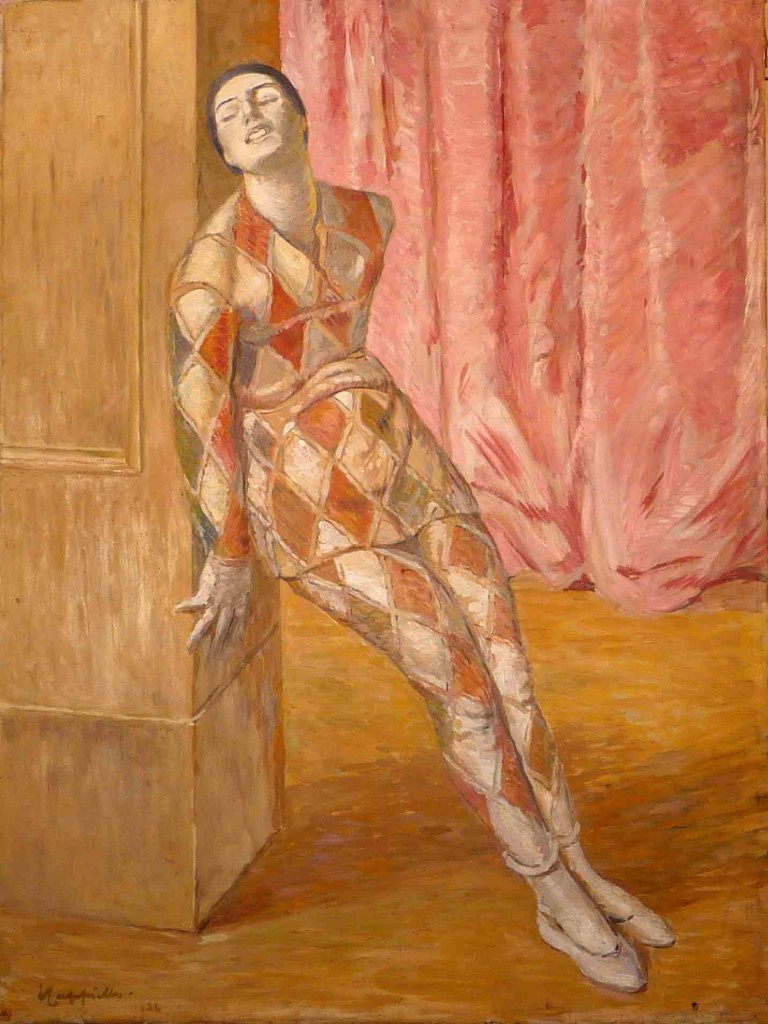
Wounded Harlequin
Jacques Viénot said: “Cappiello is a decorator in the fullest sense of the word: skilful, ingenious, with a gift for staging and presentation, he possesses the highest sense of showmanship and festivity. He is as capable of conceiving and realizing the most grandiose sets as he is of attending to the smallest details of costume”.
Today, all that remains are a few decorations or plans for decorations. The buildings where Cappiello had worked have all been demolished. Only the fresco at the Dupont restaurant in Barbès was saved from demolition. It awaits a new home in New York.
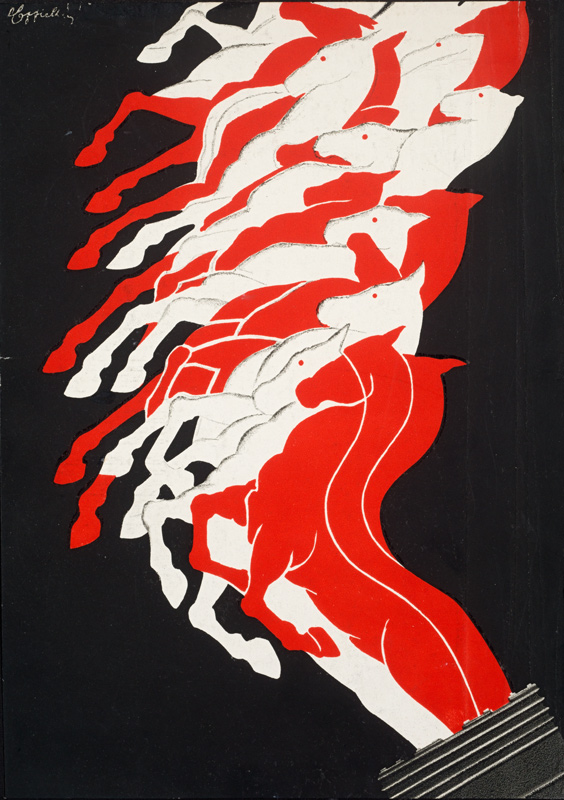
1937003A0
La Force Motrice
